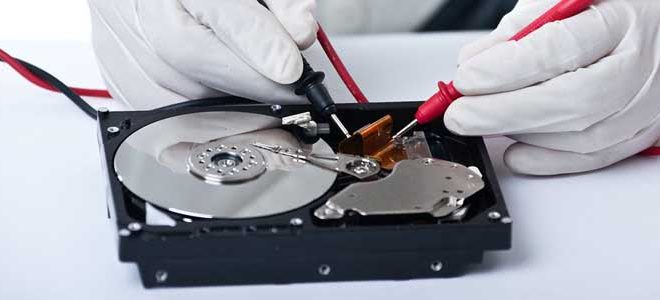There’s no denying that your iMac, MacBook, Mac Mini or Mac Pro device might be one of the most powerful and well-built devices in its category. Unfortunately, that doesn’t mean its components aren’t immune to failure. This is especially the case with the hard drive.
Being one of the few components in a modern computer that are still mechanical instead of digital, its moving parts make it more vulnerable to functionality-breaking issues than any other part of your Mac. But your data is valuable and losing it is not an option, so let’s take a look at how you can recover data from a failed hard drive on your Mac.
Disk Utility
Since the option is free to use and built right into your device, the Disk Utility tool serves as a good place to start. Locate it by rebooting Mac OS and immediately pressing Command + R simultaneously. You will now be in Recovery Mode. Choose the Disk Utility option and select your startup disk – it’s usually called Macintosh HD.
From here, choose the First Aid option. Once this process is complete, you can expect one of two outcomes: If all went according to plan, the disk will be repaired successfully, and you can log back into your device. The other outcome is that the repair process failed. This is likely due to the limitations of Disk Utility.
FSCK Command
If Disk Utility is to no avail, there is another built-in feature on Mac OS that you can use to possibly recover your failed hard drive. It’s called FSCK and you can access it by turning off your Mac, pressing the power button followed by Command + S. This brings up Single User Mode.
Start by typing in the command line: /sbin/fsck – fy before pressing Enter. From here, your device will begin analyzing your hard drive. If all is successful, the message “The Volume (name) appears to be OK” will be returned. If this doesn’t happen, enter the command line again and FSCK will attempt to repair the file system.
Just like the Disk Utility, FSCK is limited in its capabilities. It helps in repairing minor cryptic disk errors, but it’s unlikely to fix your hard drive entirely. If FSCK fails to repair your hard drive, the issue is likely beyond anything MacOS can do.
Recovery Software
You could opt to use recovery software. This is generally considered a last-resort option as most programs are expensive and there’s no guarantee that they’ll be any more effective than the built-in tools already available on your device. You also run the risk of having your data compromised or stolen by malicious data recovery software.
Data Recovery Service
A better option is to use a specialized recovery service such as Secure Data Recovery. This way, you only have to pay if they successfully recover your data instead of taking the risk of paying for unreliable software. You can also rest assured that your data is kept safe throughout the process.
Conclusion
Start by using the built-in tools on your Mac device. If they are to no avail, a data recovery service is sure to solve the problem.
 Tech Gadget Central Latest Tech News and Reviews
Tech Gadget Central Latest Tech News and Reviews




